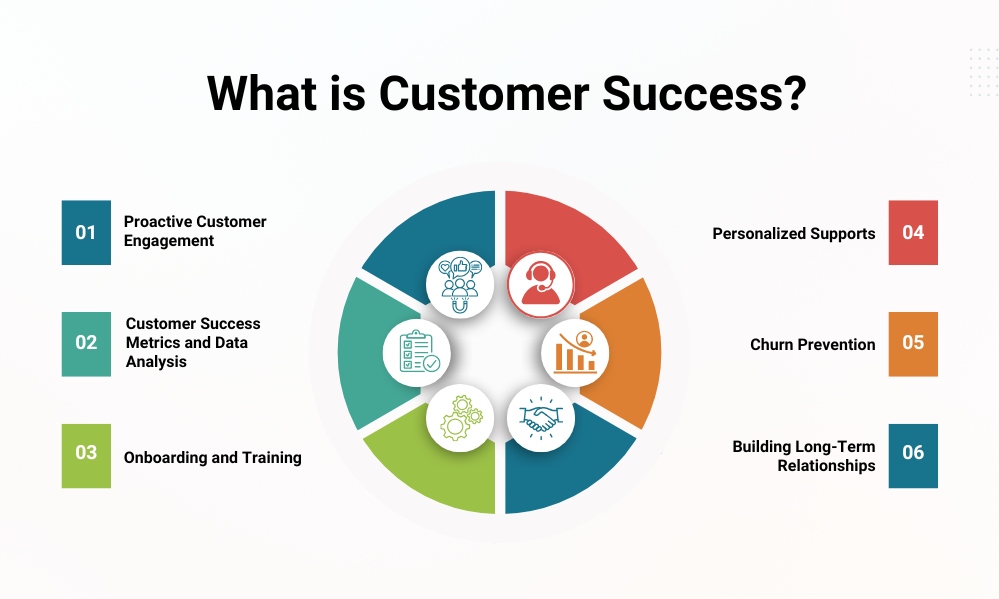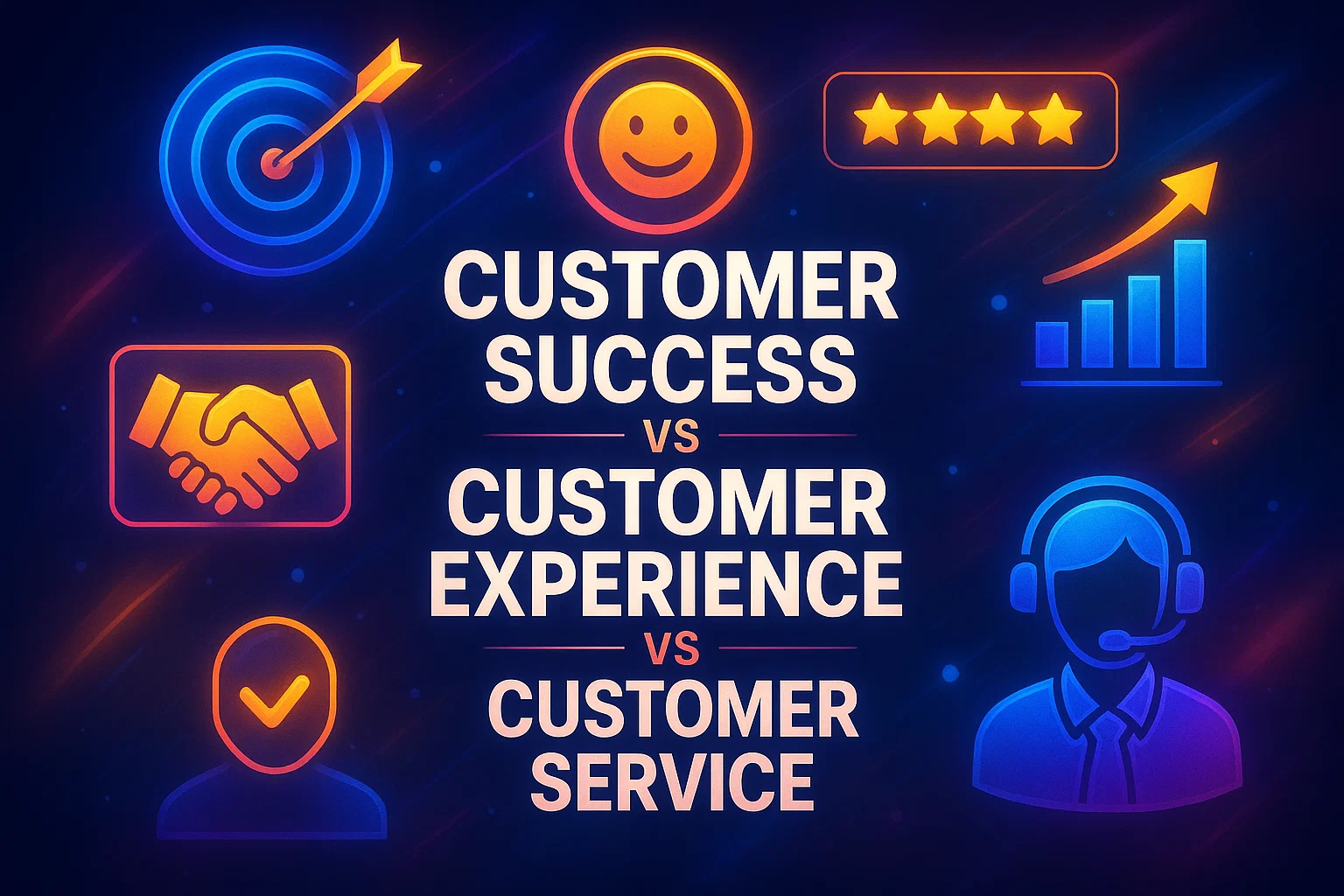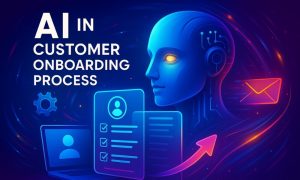Customer success is an important approach a business undertakes to keep customers satisfied and bring long-term brand value. Businesses use this process throughout the customer journey lifecycle to address customer concerns more actively and ensure they get the maximum value of the product.
It is far different from the traditional customer service approach, which is basically reactive. Instead, customer success is proactive, which is designed to build longer relationships. For this, they provide ongoing support and retain customers.
Keep on reading to get details about how this effective process works, its major components, and why it’s important to bring long-term success in businesses.
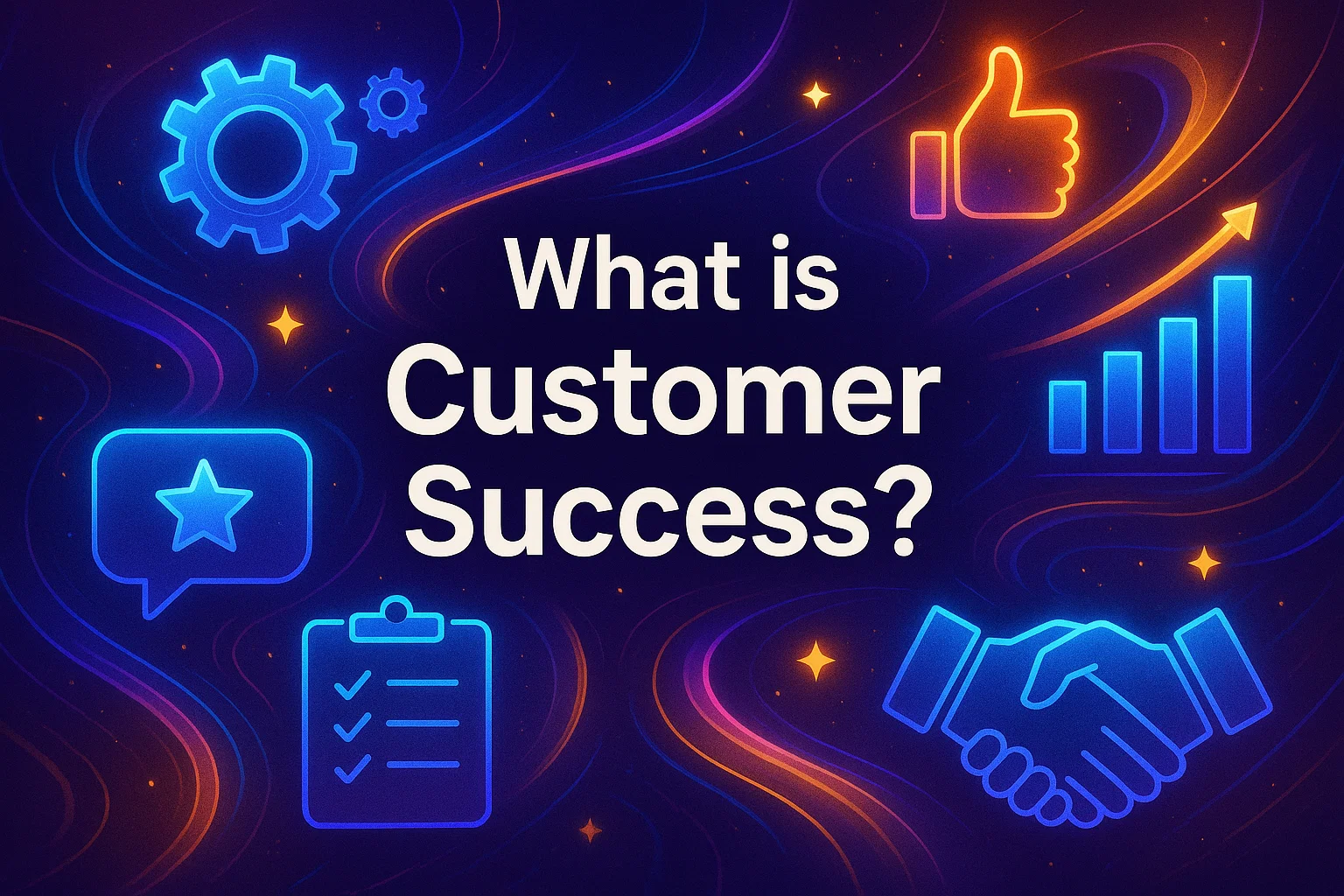
What is Customer Success?
Customer success is a strategic approach that helps customers gain their desired outcomes while using a product or service. It is all about ensuring that customers are achieving the best support through their journey and have a positive experience with the business.
This thought is even beyond addressing issues, rather, it’s attending to customers with the issues before they arise. The only motive is to build long-term relationships by understanding their needs, providing long-term satisfaction, and bringing the ultimate business growth.
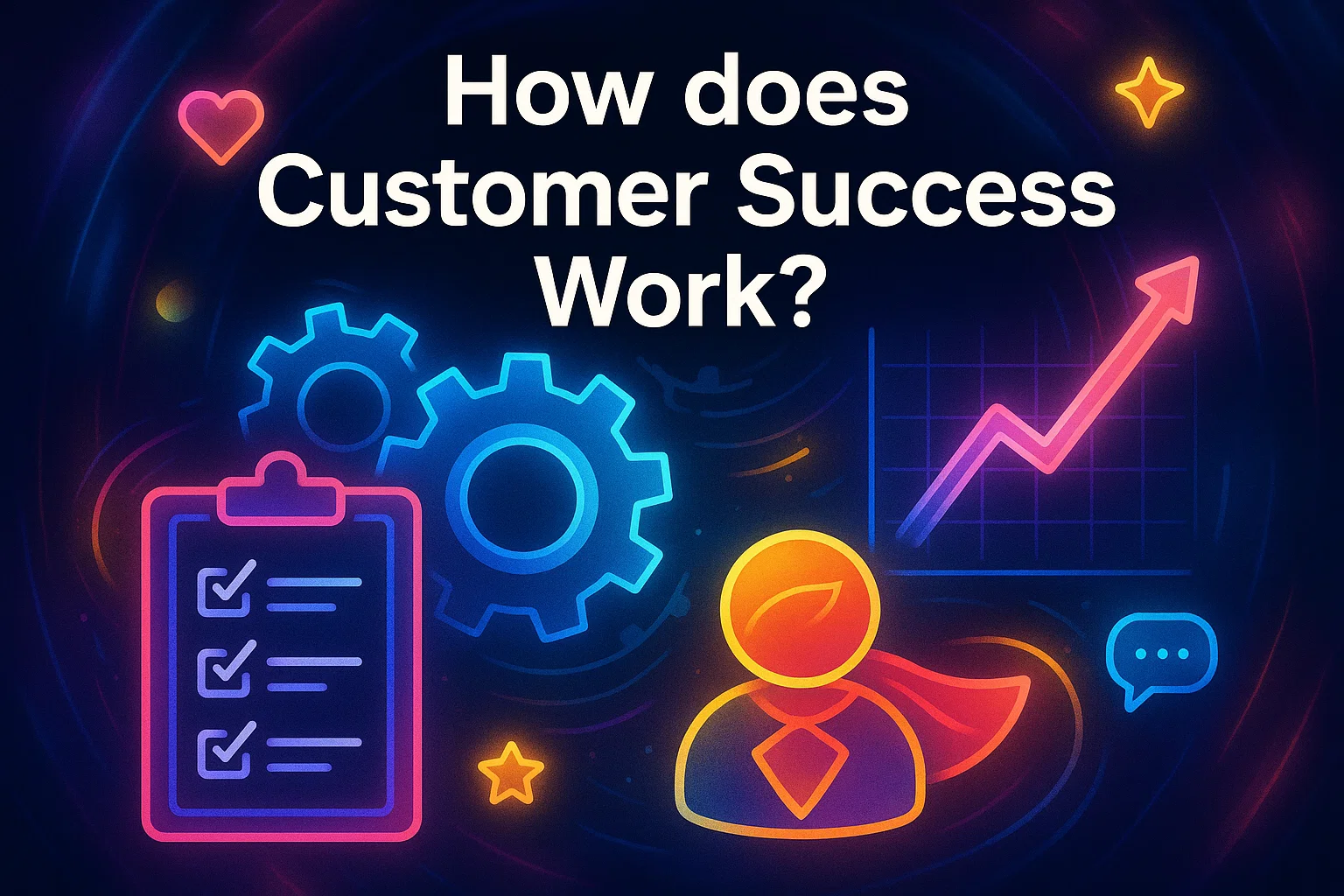
How does Customer Success Work?
Customer success works by guiding the customers towards the best process so that they can get the maximum value from a product or service. It is a proactive approach that starts when the customer signs up and continues through the service.
Here’s a breakdown of how customer success works in practice:
Proactive Customer Engagement
The CS team doesn’t wait for the arising issues that impact the customer journey or experience. Instead, they focus on predictive analytics and find out the upcoming issues that may come in a row. With regular check-ins with customers, they identify the need for support and provide guidance. This active touchpoint helps customers to achieve their goals, prevent further issues, and build trust.
Personalized Support and Solutions
In the customer success plan, the CS team doesn’t offer the same guidance to all the customers. They prefer the personalized and active attention to the individual issues. Based on the insights from the data, they adjust their support, communication, and strategies to match. Such professional approaches improve customer satisfaction, strengthen the relationship, and showcase that the customers are the top priority.
Onboarding and Training
A successful onboarding experience starts with ensuring that the customer better understands your products and services. In the customer success process, the team provides all the needed tools and resources to have an effective and successful onboarding process. It helps customers get to the product quickly, reduces the frustration rate, and ensures long-term retention.
Customer Success Metrics and Data Analysis
Customer success planning doesn’t stop with just approaching the customer base. Instead, it is recommended to measure the success rate to identify if the planning is working well or not. Businesses can track various aspects such as customer satisfaction, product usage, and renewal rates in their instance. It helps them find out the ongoing trends, identify at-risk customers, and focus on areas that need improvement.
Churn Prevention
Reducing the churn rate is one of the major aspects of an efficient customer success process. With the right strategy, the CS team identifies the early warning signs of churn. It may include declining usage or having any of the negative feedback. They take immediate action and offer additional support. By adjusting the product offering or providing incentives. Businesses can easily retain customers.
Collaboration Across Teams
Successful customer success teams work closely with sales, marketing, and product teams. It is needed to ensure customers’ needs are met throughout their journey. For example, Customer success teams connect with sales to understand the product need. Besides the the product team provides the real feedback from customers, and with the help of the marketing team, the strategies will be adjusted as needed.
Building Long-Term Relationships
At the root of the cs planning, the only goal is to build lasting relationships. It’s not just about sticking on resolving issues in the short term. But businesses should work on understanding customer goals and helping them over time. By consistently providing value, customer success teams easily turn one-time customers into long-term partners.
Key Components of Customer Success
Some major components of customer success are successful onboarding, active engagement, best customer support, building advocacy, and so on. These components are designed to ensure customers receive the full value of the product or service they’ve purchased.
Customer Onboarding
Onboarding is the first step in customer success. Here, the CS team guides the customers to the new product and provides the needed training on how to best use it. By doing so, business can easily sets up their goals with the product. A successful onboarding process lets customers feel confident in using the products and increases the chances of long-term satisfaction.
Customer Engagement
The CS team will actively communicate with the customer base to attend to what they need right away. For instance, they can conduct check-in meetings, product updates, and provide the needed training to understand any added new features. Engaged customers are more likely to stay loyal to the company and renew their contract again and again.
Customer Support
Customer support is a reactive component that highly impacts the customer success process. In this process, customer issues are addressed when they arise. The support team provides quick and effective support to maintain a strong relationship and ensure customer satisfaction.
Customer Advocacy
Customer advocacy is when the CS team really understands what customers need and makes sure those needs are met. For instance, customer success teams act as the customer’s voice inside the company. They share the customer preferences and keep the product always improving with their needs. This way, companies can grow faster and ensure long-term brand value.
Customer Health Scoring
Business uses customer health scoring tools to measure the satisfaction level of customers. For this, they use various metrics in this process, such as product usage, satisfaction surveys, and retention rates.
With this, they can determine how healthy a customer relationship is. Businesses can even find out the at-risk customers and take the right measures to retain them expectations, teams increase the likelihood of renewals and increase the chances of retention.
Upselling and Cross-Selling Opportunities
Though the main goal of customer success is to increase their satisfaction level, CS teams also look for opportunities to help customers expand their use of the product. When they have a better understanding of the customer’s needs and preferences, they can apply it to offer more products through the cross-sell and upsell methods and ensure retaining order value.
Best Practices for Customer Success
The best practices of customer success that every business should consider include understanding customer needs, ensuring effective onboarding. Also, they should ensure proactive communication, utilize data-driven strategies, and invest in training to get the best outcome.
Define Customer Needs and Goals
Successful customer success starts with a better understanding of the customer’s objectives. When you have clear knowledge of what customers are demanding, you can easily offer personalized recommendations and solutions.
Work on Onboarding Process
The onboarding process sets the base for a customer’s entire journey. A well-organized onboarding experience helps customers to quickly understand the product’s value and ensures the best outcome. Businesses can provide clear documentation, interactive tutorials, and offer personal assistance.
Maintain Consistent and Proactive Communication
Active communication is important to maintain a strong customer relationship throughout the customer journey. Instead of just waiting for the support team, the CS team actively attends to their issues. Through regular follow-ups, health-score checks, and providing resources, businesses can ensure customers stay on track to achieve their goals.
Use Data-Driven Insights for Continuous Improvement
The company can best utilize the customer data to monitor usage patterns, identify potential problems, and predict future needs. For this, they can use various effective tools such as customer success platforms, CRMs, and analytics software. Here, they will get valuable insights into customer behavior and adjust their strategies.
Provide Customized Solutions
Every customer preference is unique, so the product offering from the company should be according to meet individual needs. Customize the approaches so that you can easily meet specific challenges and needs.
Offer Customer Advocacy
With the strong relationship built with the customer, businesses can easily build effective advocates from the customer base. They will likely share their positive experience and use case with their network. Through such referrals, they can attract new customers and strengthen the brand value.
Train Your Team
A well-trained customer success team is essential to provide the best customer service. Provide your team with proper training on product knowledge, customer engagement, and problem-solving skills. With regular training sessions, workshops, and access to resources, the business can easily face any changes arising within the customer base.
Collaborate Across Departments
Customer success isn’t the responsibility of one team only. The customer success team should work closely with sales, marketing, product development, and other departments. With regular communication across teams, businesses ensure each concern will be addressed promptly.
Measure and Track Customer Success Metrics
Businesses should always track the performance of the CS through some important metrics. This includes Net Promoter Score or NPS, Customer Satisfaction or CSAT, Customer Lifetime Value or CLV, and churn rate. By regularly tracking and analyzing the data, businesses can measure the effectiveness of their strategy and make necessary adjustments.
Continuous Feedback and Improvement
Customer success planning should always change with the demands of the customers. For instance, constantly collect feedback from customers about their experience and use it to improve. It helps your business to always stay ahead of the competitive curve.
How to Build a Customer Success Team?
To build a customer success terminal, first, define clear goals, manage the needed skills for the team, and provide them with the needed tools for processing the planning.
Here’s a step-by-step approach to building a high-performing customer success team:
Set the Team Roles and Responsibilities:
Start by defining the clear roles for each of the team members in the team. Here are some important roles that must be in the team:
- Customer Success Manager (CSM): It is the core of your team that will be responsible for managing relationships. They ensure successful product onboarding and proactively bring the best outcomes for the customer.
- Onboarding Specialist: Onboarding specialists will be responsible for helping new customers get started with a product or service. They will guide them with a step-by-step process and offer support from the beginning stage.
- Customer Support: The support team will be responsible for reactive help to solve immediate problems or issues customers face. They are the first point of contact when a customer faces a challenge and offer solutions.
- Customer Success Operations: They will likely provide support for managing the system, distribute the tools, and resources to help the customer success team operate smoothly.
Identify Essential Skills:
The success of the customer success team lies in hiring the right people. Make sure to have these essential skills in your team:
- Empathy: It is the ability when the team to genuinely understand the customer’s needs and care about their challenges.
- Problem-solving: The team members must identify the challenges and offer creative solutions to resolve them.
- Effective Communication: Strong written and verbal communication is a must to manage expectations, explain solutions, and resolve issues.
- Analytical Skills: The customer success team members should be able to analyze customer data, such as health scores and usage patterns.
Equip Your Team with the Right Tools:
To optimize customer success planning, ensure to provide your team with the right tools.
Consider using:
- CRM Software: CRM software helps manage customer relationships and data effectively. For instance, you can place Salesforce to track interactions and monitor the customer journey.
- Customer Success Platforms: The CS team should use the customer success tools to monitor customer health, track milestones, and automate workflows. Gainsight, Totango are standouts in this instance.
- Feedback Tools: The feedback collecting tools, such as SurveyMonkey, are needed to collect regular feedback from the customers.
Invest in Continuous Training and Development:
Customer success is a dynamic field that is continuously changing with customer expectations and product innovations. You must invest in your team’s growth with ongoing training, which is even important for employee retention.
According to a report, 94% of employees say they would stay longer at a company that invests in their career development.
For training the CS team, consider:
- Product knowledge updates.
- Soft skills training such as communication, empathy.
- Keep your team updated with the industry trends and customer success best practices.
Create a Unified Customer-Centric Approach:
Customer success efforts should extend beyond just the customer success team. The best approach is that it should be a company-wide initiative. Businesses should build effective collaborations across all departments, such as sales, marketing, and product development, to:
- Ensure customer feedback is addressed and acted upon accordingly.
- All the team members are aligned at the same stage to meet the ultimate customer satisfaction level.
Customer Success vs Customer Experience vs Customer Service
Customer success is the reactive assistance to solve specific issues, while customer experience demonstrates how each customer feels. Customer success is when a company works with customers to help them get the most out of a product or service and achieve desired outcomes.
Customer Success
Customer success is a proactive, long-term strategy designed to ensure the best results from the product or service. The ultimate goal is to ensure customers understand the full value of their purchase, which results in higher customer retention.
Key Focus Areas of Customer Success
- Proactive engagement to ensure long-term success
- Align the customer goals with the best abilities of the product or services.
- Offer continuous support to ensure the customer can resolve any issues and best implement the product features.
Example:
A SaaS company has a dedicated customer success team that monitors customer health scores. With the proactive approach, they ensure clients hit milestones and offer solutions to prevent churn before it arises.
Customer Experience (CX)
Customer experience refers to every interaction a customer has with a brand throughout their entire journey. It starts when the customer signs up for the service and continues through their purchase and even after they’ve bought the product or service. It includes everything from website visits, social media interactions, to customer support, and more.
Key Focus Areas of Customer Experience:
- Creating positive interactions for the customers across all channels
- Enhancing overall satisfaction with the brand
- Managing every touchpoint to build a lasting and positive experience
Example:
Suppose a clothing store wants customers to have a great experience. With efficient customer experience, they ensure a smooth experience across their website, social media, and in-store visits. When customers visit the physical store, they feel everything is user-friendly, starting from signing in to checkout.
Customer Service
Customer service is a reactive approach that is designed to resolve customers’ issues when problems arise.
Key Focus:
- Helping customers solve problems as soon as they come up
- Provide a quick solution to make the customer happy
- Offer immediate assistance when customers face problems
Example:
A tech company’s customer service team helps the customer fix all the technical issues when customers report malfunctions while using. They ensure all the customer concerns are handled the right way through troubleshooting and support tickets, and reduce frustration.
Key Differences:
| Aspect | Customer Success | Customer Experience | Customer Service |
| Focus | Long-term customer retention, proactive value delivery | Overall satisfaction from every customer interaction | Solving specific issues or inquiries as they arise |
| Approach | Proactive, relationship-focused | A complete view of the customer’s experience from start to finish. | Reactive, focused on problem-solving in real-time |
| Goal | Prevent churn, ensure customers achieve their goals | Create positive, memorable experiences at every touchpoint | Solve problems or answer questions quickly |
| Examples | Onboarding, customer check-ins, and goal-setting strategies | Website experience, communication consistency, emotional connection | Support calls, live chat assistance, and troubleshooting |
Future Trends in Customer Success
With the customer success platform constantly changing, here are the key trends that will transform the overall approaches:
AI-Driven Customer Success Automation
AI has a big role through which businesses can automate the customer success processes. It helps the CS team optimize the workflows with the best touch at every stage. With the help of AI tools, businesses can identify at-risk customers and find solutions before they worsen. It even makes the data analysis process much more efficient and accurate.
Predictive Analytics for Proactive Strategies
Predictive analytics is an essential tool that helps customer success teams understand what might happen in the future through analysis of customer data. Businesses can predict future behavior, such as when a customer is likely to churn or when they might want more of a product. It helps teams take the needed steps earlier and offer the right solutions and guidance.
Expansion of Self-Service & Digital Engagement
Customers are now highly demanding of finding the answers and solving problems on their own. Self-service options, such as knowledge bases, tutorials, and automated chatbots, provide effective strategies that can meet this specific demand. Customers will interact with the company through digital channels like social media, community forums, and mobile apps in the ways that suit them best.
Changing Role of Customer Success Managers (CSMs)
The role of CSMs is also changing with the CS being strategic day by day. Beyond reactive issue solving, the team members are playing a big role as strategic advocates who guide customers toward achieving their long-term goals. As a result, there is a growing demand for CSMs’ skill sets in data analysis, relationship management, and a deeper understanding of business outcomes.
Final Thoughts
Customer success is not the theme of predicting anymore. It is an effective part of any business that helps keep customers happy, loyal, and coming back for more. When businesses focus on guiding customers to achieve their goals, they can easily build stronger and longer-lasting relationships with them.
To create a stronger customer success strategy, companies must focus on key components such as onboarding, proactive support, and continuous engagement. However, if you’re planning to strengthen your customer success strategy, now is the time to start.
Start by assessing your current approach, identifying areas for improvement, and implementing the best practices discussed in this guide.
Author
Shirikant is a proven customer success leader who combines sharp business insight with practical experience to improve retention and drive revenue. As the founder of Statwide, he designs customer-first business strategies that guide companies to turn users into loyal and long-term partners. His approaches are built on real results: stronger relationships, higher customer value, and lasting growth.

